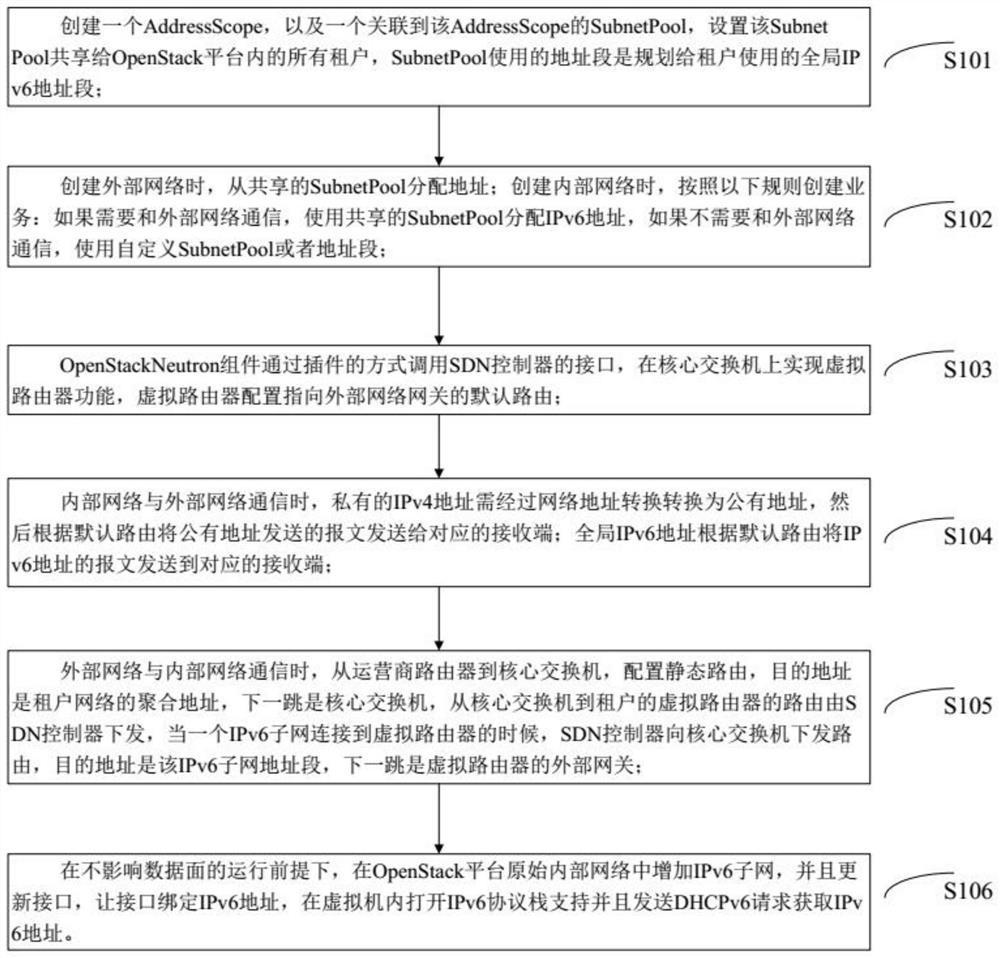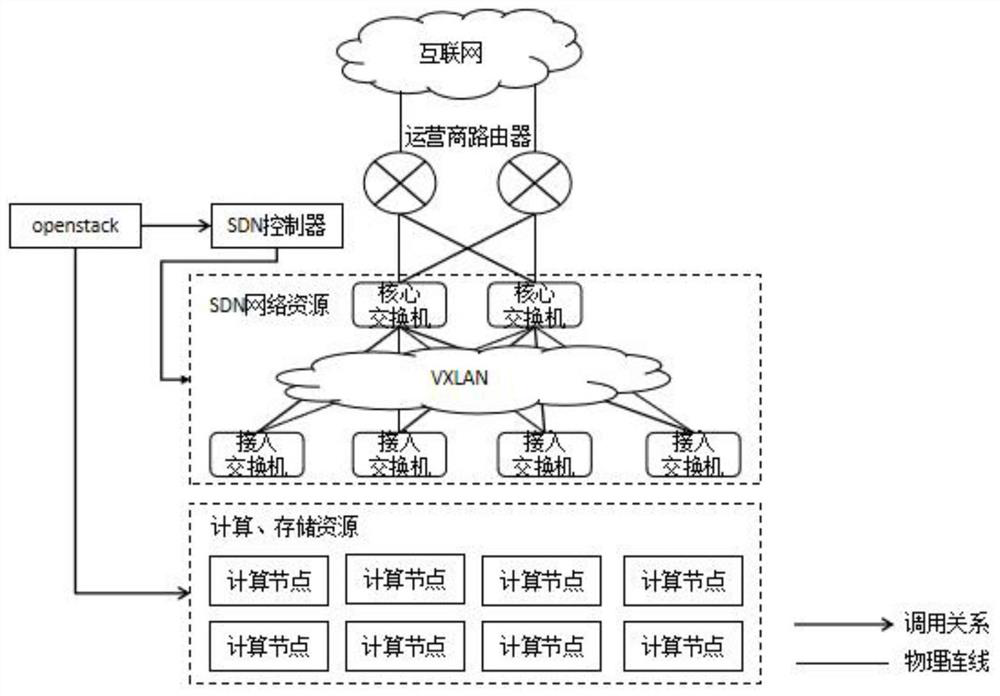sdn-based ipv4/ipv6 dual stack conversion method and system
A conversion method and conversion system technology, applied in the field of SDN-based IPv4/IPv6 dual-stack conversion method and system, capable of solving problems such as confusion and address overlap
- Summary
- Abstract
- Description
- Claims
- Application Information
AI Technical Summary
Problems solved by technology
Method used
Image
Examples
Embodiment 1
[0039] Such as figure 1 Shown, the SDN-based IPv4 / IPv6 dual-stack conversion method of the present invention, it may further comprise the steps:
[0040] S101, create an Address Scope, and a SubnetPool associated to the Address Scope, set the Subnet Pool to be shared with all tenants in the OpenStack platform, and the address segment used by the Subnet Pool is the global IPv6 address segment planned for use by the tenant;
[0041] S102. When creating an external network, allocate an address from the shared Subnet Pool; create a service according to the following rules: when a tenant creates an internal network, if it needs to communicate with the external network, use the shared Subnet Pool to allocate an IPv6 address; if it does not need to communicate with the external network Communication, use custom SubnetPool or address segment;
[0042] S103, the OpenStackNeutron component invokes the interface of the SDN controller through a plug-in, implements a virtual router functi...
Embodiment 2
[0052] On the other hand, if image 3 As shown, the present invention provides an SDN-based IPv4 / IPv6 dual-stack conversion system, which includes an access switch, a core switch, an operator router, an SDN controller, and an OpenStack platform.
[0053] Among them, the core switch is responsible for the connection of each access switch and the communication with the external network; the computing node is responsible for running the virtualization management program, and virtualizes a physical server into multiple virtual servers for users to use; the access switch is responsible for the connection of physical servers. It accepts the control of the SDN controller to realize the encapsulation and decapsulation of VXLAN packets.
[0054] The carrier router is responsible for connecting the data center network to the carrier network. In this implementation, when the carrier router accesses the internal network in the OpenStack platform from the external network, the configurati...
PUM
 Login to View More
Login to View More Abstract
Description
Claims
Application Information
 Login to View More
Login to View More - R&D
- Intellectual Property
- Life Sciences
- Materials
- Tech Scout
- Unparalleled Data Quality
- Higher Quality Content
- 60% Fewer Hallucinations
Browse by: Latest US Patents, China's latest patents, Technical Efficacy Thesaurus, Application Domain, Technology Topic, Popular Technical Reports.
© 2025 PatSnap. All rights reserved.Legal|Privacy policy|Modern Slavery Act Transparency Statement|Sitemap|About US| Contact US: help@patsnap.com



